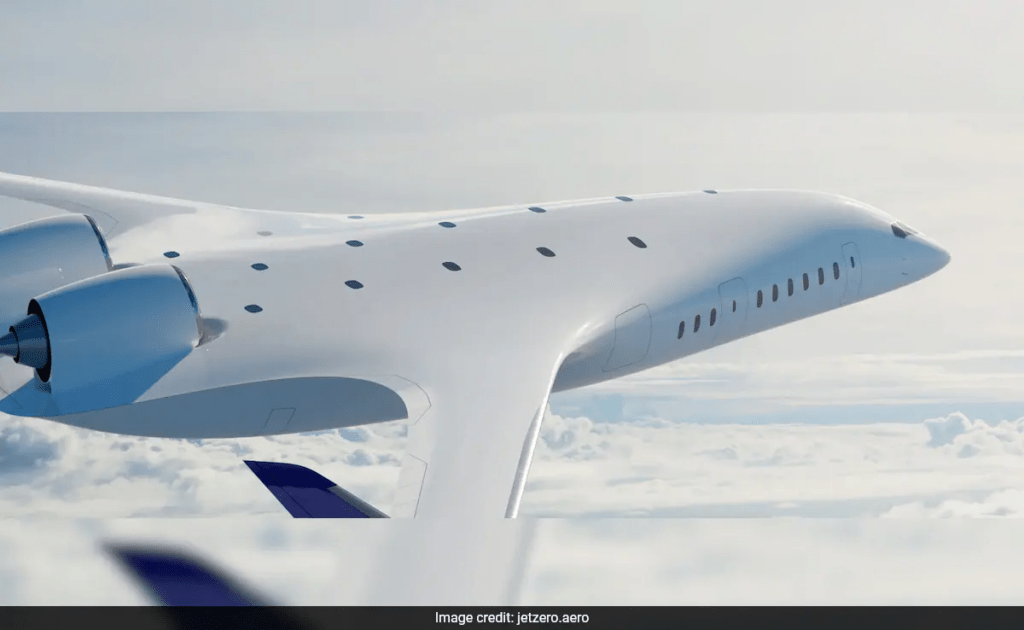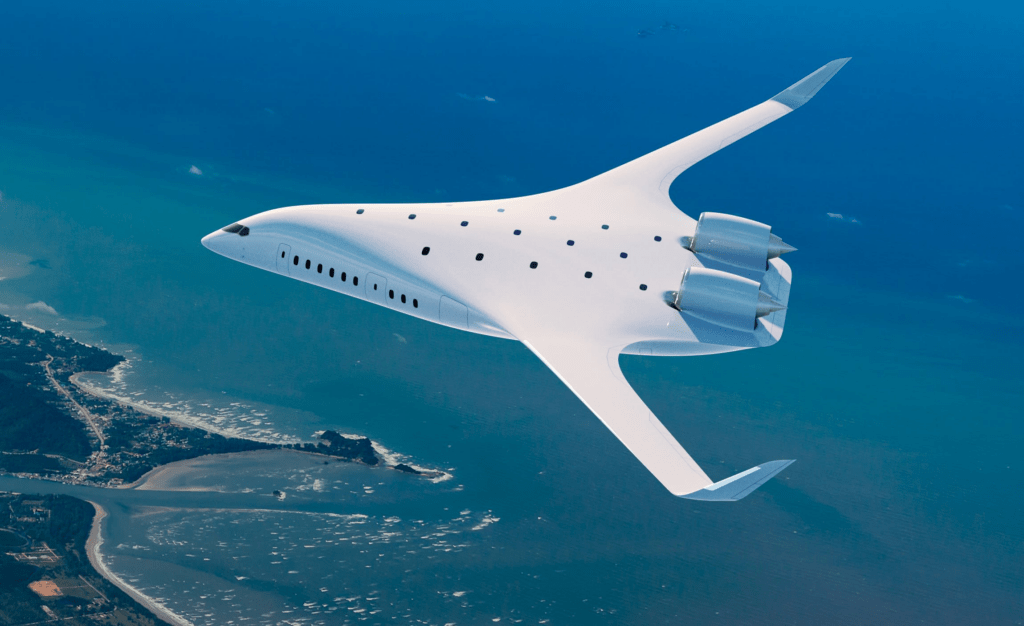The aviation industry stands on the cusp of a revolutionary transformation with the development of a next-generation passenger plane featuring a cutting-edge “blended wing” design. This innovative aircraft, expected to take flight by 2030, represents a monumental shift in aviation technology, promising to slash fuel consumption by an impressive 50% while dramatically reducing noise pollution. As the world confronts the pressing challenges of climate change and the urgent need to curb carbon emissions, this breakthrough underscores the critical role of sustainable innovation in reshaping industries for a greener future. Beyond its immediate environmental and operational benefits, the blended-wing design serves as a powerful reminder of the importance of reimagining traditional systems and embracing bold, forward-thinking solutions to align with global ecological goals. This aircraft is not just a step forward for aviation—it’s a leap toward a more sustainable and harmonious relationship between technology and the planet.
The Ecological Impact of Conventional Aviation
Aviation is a major contributor to global carbon emissions, accounting for approximately 2-3% of the world’s CO₂ emissions. Traditional passenger jets, with their tubular fuselage and separate wings, are designed for stability and commercial viability but are not optimized for fuel efficiency or environmental sustainability. The reliance on fossil fuels, coupled with the growing demand for air travel, has made the aviation industry a significant target for sustainability efforts.
The blended-wing design represents a paradigm shift. By seamlessly integrating the wings into the body of the aircraft, this design reduces drag, increases lift, and improves overall aerodynamics. These enhancements translate into lower fuel consumption and fewer emissions, making it a game-changer for sustainable aviation.
The Blended-Wing Design: A Sustainable Solution
JetZero, the pioneering company behind this groundbreaking blended-wing design, has joined forces with Siemens to turn this visionary concept into reality by 2030. This next-generation aircraft is engineered to be compatible with sustainable aviation fuels (SAF) and hydrogen fuel, aligning with the industry’s ambitious goal of achieving zero emissions. The blended-wing design represents a significant leap forward in sustainable aviation, offering a host of benefits that address both environmental and operational challenges.
One of the most notable advantages is its remarkable fuel efficiency. By seamlessly integrating the wings into the aircraft’s body, the design drastically improves aerodynamics, reducing drag and increasing lift. This innovation alone can cut fuel consumption by up to 50%, leading to a substantial decrease in carbon emissions. Additionally, the aircraft’s advanced propulsion systems are strategically integrated to minimize noise pollution, creating a quieter experience for passengers and reducing the impact on communities near airports.
The blended-wing structure also incorporates lightweight materials and construction techniques, further enhancing fuel efficiency by reducing the overall weight of the aircraft. Beyond these immediate benefits, the design is future-proof, designed to adapt to emerging green energy sources. Its compatibility with hydrogen fuel and SAF ensures it will remain at the forefront of sustainable aviation as the industry transitions away from fossil fuels. Together, these features position the blended-wing aircraft as a transformative solution, not just for aviation, but for the broader pursuit of a sustainable and ecologically responsible future.
Broader Implications for Sustainability and Ecology
The blended-wing aircraft is far more than a technological marvel; it stands as a powerful testament to the transformative potential of innovation in tackling some of the most pressing ecological challenges of our time. Its development is a direct response to the global call to combat climate change and significantly reduce humanity’s carbon footprint. Yet, while this groundbreaking achievement marks a major milestone, it represents only one piece of a much larger puzzle. The principles behind this innovation—efficiency, sustainability, and forward-thinking design—can inspire and be applied across a wide range of industries. From maritime transport to urban planning, and from renewable energy integration to automotive engineering, the lessons learned from the blended-wing aircraft can pave the way for a more eco-friendly future. By embracing similar sustainable solutions, industries worldwide can collectively contribute to a healthier planet, proving that innovation and environmental stewardship can go hand in hand.

Potential Similar Solutions in Other Sectors
- Maritime Transport:
The shipping industry, another major emitter of greenhouse gases, could benefit from hull designs inspired by the blended-wing concept. Streamlined, energy-efficient ship designs could reduce fuel consumption and emissions. - Automotive Industry:
Electric vehicles (EVs) are already transforming personal transportation, but further innovations in aerodynamics and lightweight materials could enhance their efficiency and range. - Urban Planning:
Cities could adopt blended-wing-inspired designs for public transportation systems, such as buses and trains, to improve energy efficiency and reduce environmental impact. - Renewable Energy Integration:
The aviation industry’s shift toward hydrogen and SAF could inspire other sectors to explore alternative energy sources, such as green hydrogen for industrial processes or biofuels for heavy machinery.
Challenges and the Road Ahead
While the blended-wing design holds immense promise, its implementation is not without challenges. Building the necessary infrastructure, such as factories and supply chains, will require significant investment and collaboration. Additionally, regulatory approvals and public acceptance of this unconventional design may take time.
However, the use of digital twin technology, which creates a virtual replica of the aircraft for testing and optimization, demonstrates how advanced tools can accelerate innovation. Artificial intelligence (AI) and machine learning can further enhance the design process, ensuring that the final product is both efficient and sustainable.

In Short
The blended-wing passenger plane represents a bold step toward a more sustainable future for aviation. By reimagining traditional designs and embracing cutting-edge technology, JetZero and Siemens are paving the way for a greener, quieter, and more efficient mode of transportation. This innovation serves as a reminder that sustainability and ecology are not just about reducing harm but also about rethinking systems and embracing creativity to build a better world.
As we look to 2030 and beyond, the blended-wing aircraft offers hope and inspiration for other industries to follow suit. By prioritizing sustainability and leveraging technology, we can create solutions that benefit both people and the planet. The skies of the future may look different, but they will undoubtedly be cleaner and quieter, thanks to innovations like this.
Related Content
- Toyota’s Hydrogen Evolution: Pioneering the Future of Sustainable Transportation
- Find more sustainable ways to get around, with new Maps and Search updates
- Revolutionizing Tomorrow: The Rise of ChatGPT and the Future of AI-Powered Conversations
- 5 Surprising Habits That Are Harming Your Health (And How to Fix Them)
- Successful Maiden Flights for the Hydrogen Powered Aircraft
- Blended wing body: The future of passenger aircraft?
- ‘Blended-Wing’ Planes May Be the Future of Flight
- Blended wing body: the future of air transportation?
- Blended Wing Body Aircraft

